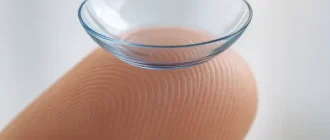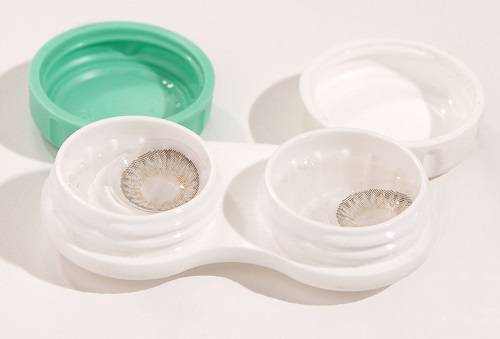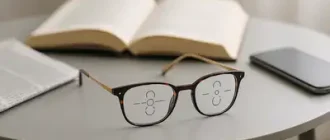Ultraviolet (UV) radiation from the sun is more than just a threat to your skin—it can seriously harm your eyes. Long-term exposure increases the risk of cataracts, macular degeneration, and photokeratitis (a painful sunburn of the eye). According to the American Academy of Ophthalmology, UV exposure is one of the leading preventable causes of eye damage in the U.S.
Customer Ratings of UV-Protective Sunglasses by Brand
| Brand | Average Rating (out of 5) |
|---|---|
| Ray-Ban | 4.5 |
| Oakley | 4.7 |
| Maui Jim | 4.8 |
| Costa Del Mar | 4.6 |
| Warby Parker | 4.3 |
This chart compares customer ratings for different brands of UV-protective sunglasses. Maui Jim leads with the highest rating, while Warby Parker has the lowest among the selected brands.
What to Look for in UV-Protective Sunglasses
Not all sunglasses provide the same level of protection. Here’s what to check before buying:
- 100% UV Protection: Imagine sunscreen for your eyes—just as SPF blocks harmful rays from damaging your skin, sunglasses labeled “100% UV protection” or “UV400” act as a shield against both UVA and UVB rays. Without it, UV exposure can slowly harm your vision over time, much like unprotected sun exposure damages your skin.
- Polarization: Think of polarized lenses as anti-glare coatings for your eyes, similar to the way tinted car windows reduce sunlight reflections. However, polarization alone doesn’t block UV rays—it just cuts down glare from surfaces like water, roads, or snow. Always check for additional UV-blocking features.
- Lens Tint: Darker lenses don’t mean better protection—imagine wearing a dark umbrella that blocks the sun’s brightness but still lets harmful rays through. UV protection comes from the special coatings on the lenses, not the tint itself.
- Wraparound and Oversized Frames: Picture a baseball cap versus a full-coverage sun hat—the wider the coverage, the less sunlight gets through. Wraparound and oversized sunglasses reduce the amount of UV rays sneaking in from the sides, offering more complete protection.
- Material Matters: Polycarbonate and Trivex lenses are like the bulletproof vests of sunglasses. They naturally block UV rays and are shatter-resistant, making them a great choice for active lifestyles or sports.
Common Features in UV-Protective Sunglasses
This chart illustrates the prevalence of common features in UV-protective sunglasses. Polarized lenses are the most popular, while hydrophobic coating is the least common.
Best Sunglasses Brands for UV Protection
If you’re looking for reliable protection, consider these brands that consistently rate high for UV safety:
- Maui Jim – Known for their advanced polarized lenses with 100% UV protection. Their sunglasses are praised for high color clarity, exceptional contrast, and durability. Prices range from $200 to $400, depending on the model.
- Oakley – Sports-focused sunglasses with high UV defense and durability. They are especially popular among athletes due to their lightweight frames and impact-resistant lenses. Prices typically range from $150 to $300.
- Ray-Ban – Classic styles with modern UV-blocking technology. Their sunglasses blend fashion with function, and many models now feature blue light filtering. Prices vary from $120 to $250.
- Costa Del Mar – Ideal for outdoor enthusiasts, offering 100% UV blockage. Known for their superior lens technology, these sunglasses are favored by anglers and adventurers. Prices start at $150 and go up to $350.
- Smith Optics – Combines style with high-performance UV protection. Their ChromaPop lens technology enhances color and contrast while reducing eye strain. Prices range from $100 to $250.
Modern Innovations in UV-Blocking Lenses
Sunglasses technology has evolved significantly. Some recent advancements include:
- Photochromic Lenses: These lenses automatically darken in response to UV exposure, adapting to changing light conditions.
- Blue Light Filtering: Many UV-protective sunglasses now also block harmful blue light from screens.
- Anti-Reflective Coatings: Reduce glare and improve vision clarity while blocking UV rays.
- Gradient Lenses: These provide varying levels of darkness, with the top portion being darker to block sunlight while allowing better visibility at the bottom.
- Mirrored Coatings: Reflect additional light, reducing the amount of direct sunlight reaching the eyes, further enhancing UV protection.
Most Common UV Protection Certifications
| Certification | Percentage of Certified Sunglasses (%) |
|---|---|
| UV400 | 85% |
| ANSI Z80.3 | 60% |
| ISO 12312-1 | 50% |
| CE Mark | 70% |
This chart displays the most common UV protection certifications found in sunglasses. UV400 certification is the most prevalent, ensuring maximum UV blockage, while ISO 12312-1 is less common but still widely used.
Common Myths About UV Protection in Sunglasses
- “Cheap sunglasses don’t offer UV protection.” False! Many affordable brands now include UV-blocking coatings. However, it is important to check for a UV400 label or ask for certification to ensure full protection.
- “If it’s cloudy, I don’t need sunglasses.” UV rays penetrate clouds, so protection is essential year-round. Even on overcast days, up to 80% of UV radiation reaches the Earth’s surface.
- “Only summer sun is harmful.” UV exposure occurs in all seasons—snow and water even reflect more UV radiation. In fact, fresh snow can reflect up to 85% of UV rays, increasing your exposure risk.
- “UV protection wears off over time.” Not true! Unlike prescription glasses, UV protection in quality sunglasses does not degrade over time unless the lens itself is scratched or damaged. Keeping them in a protective case helps maintain their effectiveness.
- “Bigger sunglasses always offer better protection.” While larger frames do help reduce exposure from the sides, the key factor is UV-blocking lens technology rather than the size of the sunglasses alone.
Real-Life Cases: UV Damage and Sunglasses Use
- Case #1: 45-year-old male from Arizona developed early cataracts due to years of working outdoors without UV-protective sunglasses.
- Case #2: 30-year-old female from Florida suffered from photokeratitis after a beach trip without sunglasses, experiencing temporary blindness and severe pain.
- Case #3: 50-year-old construction worker from California experienced pterygium (a growth on the white of the eye) due to prolonged UV exposure without eye protection, eventually requiring surgery.
- Case #4: 22-year-old skier from Colorado suffered corneal damage after spending a full day in high-altitude conditions without UV-blocking eyewear, leading to extreme discomfort and blurred vision for several days.
Effectiveness of Different Lens Coatings Against UV Rays
This chart illustrates the effectiveness of different lens coatings in blocking UV rays. Polarized coatings provide the highest UV protection, while gradient tints offer the least among the listed coatings.
Editorial Advice
Reyus Mammadli, healthcare advisor, recommends wearing UV-blocking sunglasses daily—even in winter or cloudy conditions. He suggests choosing sunglasses that meet the ANSI Z80.3 standard, ensuring adequate UV filtration. Additionally, he advises pairing sunglasses with a wide-brimmed hat for extra protection. For those frequently exposed to bright conditions, investing in prescription sunglasses with UV-blocking technology can provide even better long-term eye care.
Protecting your eyes from UV radiation is simple but essential. Investing in high-quality sunglasses with verified UV protection can safeguard your vision for years to come. Don’t just go for style—go for safety.
Percentage of People Wearing UV-Protective Sunglasses by Age Group
This chart illustrates the percentage of people wearing UV-protective sunglasses across different age groups. The older age groups tend to wear UV-protective sunglasses more frequently than younger individuals.
References
- American Academy of Ophthalmology – UV radiation and eye health guidelines.
- National Eye Institute – Effects of UV exposure on vision.
- World Health Organization (WHO) – UV radiation and health risks.
- FDA Guidelines on UV Protection for Sunglasses.
- Consumer Reports – Best UV-protective sunglasses brands and features.
- Optical Industry Standards – ANSI Z80.3 for UV-blocking eyewear.
- Clinical studies on UV-related eye diseases from PubMed and JAMA Ophthalmology.
- Manufacturer websites: Maui Jim, Oakley, Ray-Ban, Costa Del Mar, Smith Optics.





